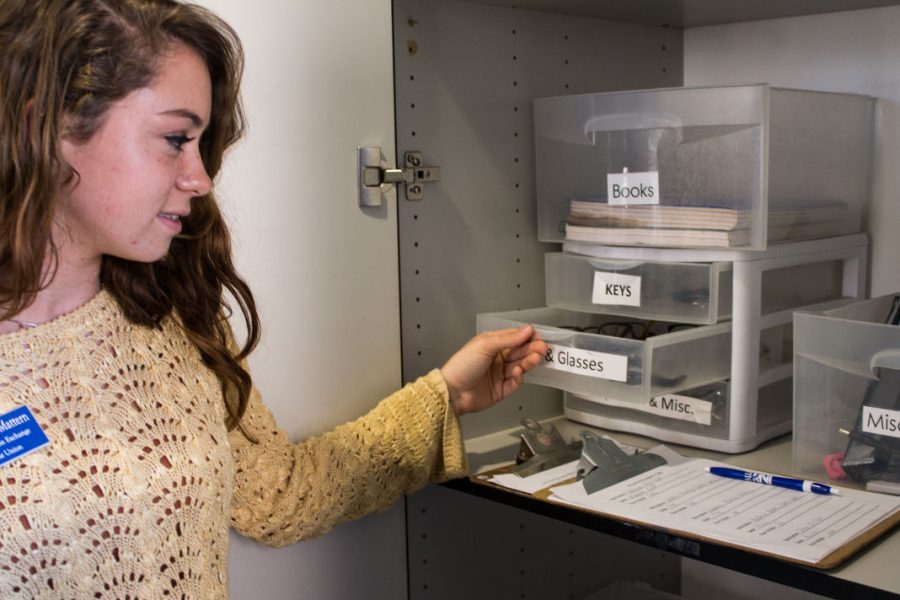Lost & Found
Information Exchange attendant Mackenzie Mattern shows the items in the lost and found box of the Union
September 30, 2015
Students know the feeling: that sinking feeling in the stomach when they realize the impossible-to-live-without cell phone charger was left in an outlet at The Union; that gut-wrenching feeling when the attached-to-the-hip ID card is still at the printer in the library. But students do not need to feel so lost because their items may have been found.
SDSU offers three main locations for its lost and found items including the Briggs Library, the Information Exchange in The Union and the University Police Department at the Sorenson Center.
“We’ll definitely get a lot of students and Union staff members coming up with things several times in one shift,” said Trey Etrheim, student manager for the Information Exchange.
Like the UPD office, found items come to the Information Exchange from many places across campus. Naturally, these come from The Union, but also from many of the academic buildings and general grounds surrounding the Exchange.
However, staff members for lost and found services note that there isn’t an equally large number of student inquiring about lost items as there are students and staff members turning in items.
“It’s definitely not as common that we get people coming up and asking about items. It’s usually only once a week or so,” said Adam Hybbert, Briggs Library circulation supervisor.
So with the owner’s failure to often inquire about items, the responsibility for finding the item owners falls to staff and they put in every effort to return items on owners. Typically, staff members check the found item to ensure it doesn’t happen to contain any contact information and will try to open bags and electronics to find files and tags with this information.
“We try not to be too intrusive when we’re looking for the identity behind an item. When we do find out who it belongs to, we do our best to contact them and let them know we have it,” Hybbert said.
As for which items students on campus are losing, most items are electronics and include thumb drives, chargers and earbuds. More personal items include wallets, dorm keys and student IDs, which are much easier for staff to return to owners. Most of these found items are usually kept behind counters in bins.
In addition, the items that come in tend to be seasonal. With the start of the year, Information Exchange sees a lot more IDs and keys go missing. During the winter, they will receive a lot more winter-related gear.
Staff at the Briggs Library and at the Information Exchange typically keep these found items for about a month before giving them away to Goodwill. If students ask staff members, they can take a description of students’ lost items and will typically keep looking for the item for a week.
Among the most unexpected items that lost and found resources have had turned in, staff members at the Information Exchange and Briggs Library are most surprised when students turn in wallets and even money by itself. Access Services Librarian Mary Kralgie said to check the lost and found resources, no matter how random the lost item is.
“If students have lost anything, even if it’s something like cash, something that you would think people normally wouldn’t turn in, check anyway,” Kralgie said. “There are a surprising amount of honest people on campus.”
























